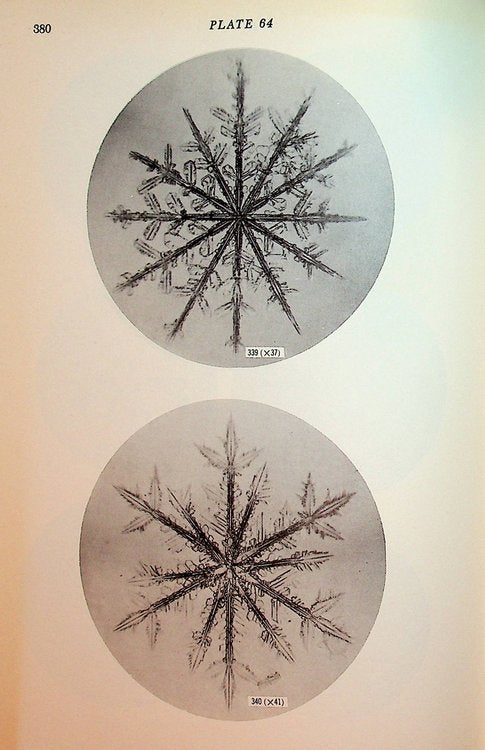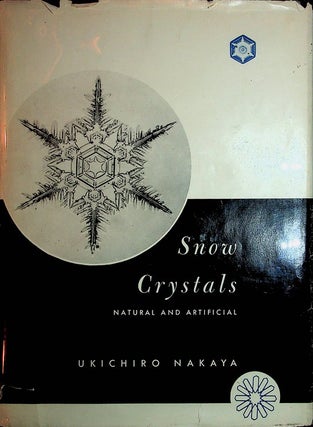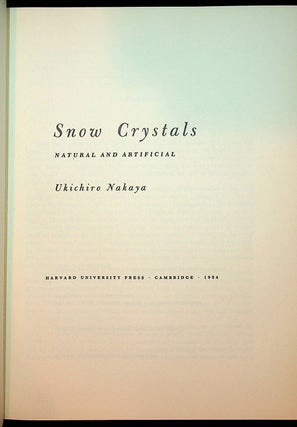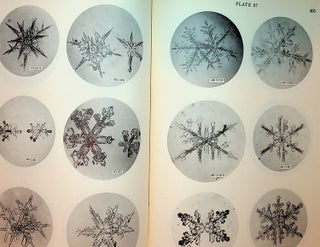Snow Crystals Natural and Artificial
Cambridge, Massachusetts: Harvard University Press 1954. First Edition. xi, [1], 510 pages. Publisher's black cloth with white titling. Dust jacket is worn with creasing and tearing. Price clipped. Bright and clean internally. Near Fine / Good. Cloth. [27568]
"It is rarely that a publisher receives a book undeniaby scientific in purpose which is also of undeniable interest to men in general. This book, besides being a record of factual, physical discovery, is a gallery of beautiful structures and designs, a gallery of photographs of the crystals of such a mystical and enchanting thing as snow."
Nakaya is credited with creating the first artificial snow crystals but it wasn't easy. "From 1933, Nakaya observed natural snow and created 3,000 photographic plates of snow crystals, classifying them into seven major and numerous minor types. In the course of these observations, taking photographs of natural snow and sorting them by appearance according to weather conditions, Nakaya felt the need to make artificial snow from ice crystals grown in the laboratory. He generated water vapor in a dual-layer hollow glass tube, which was then cooled. Contrary to his initial expectations, creating snow crystals was not an easy task – instead of forming into snowflakes, the ice crystals grew like caterpillars on the cotton string he used for nucleation.
The Low Temperature Science Laboratory opened in 1935, and experiments continued with various materials for the ice nucleus. These experiments revealed that woolen string is better than cotton string; however, the snow crystals were still not forming as intended. One day Nakaya found a snow crystal on the tip of a hair of a rabbit-fur coat in the lab. This was the breakthrough that led to the production of the first artificial snow crystal. On March 12, 1936, three years after the first attempt, he produced a snow crystal on the tip of a single hair of rabbit fur in his laboratory apparatus. In December 1937, he took photographs of many types of artificial snow crystals in his lab. These photographs were influenced by Wilson Bentley's 1931 book Snow Crystals, which he admired greatly. Nakaya continued his research into snow crystals and elucidated how their various patterns are produced in nature. He published his Nakaya Diagram, which describes the relationships among vapor, temperature, supersaturation, and excess vapor density in clouds. Nakaya's achievement is commemorated today by a hexagonal stone monument at the site of his laboratory on the campus of Hokkaido University. His original apparatus is preserved and on display at The Institute for Low Temperature Science." (wiki)
What more need be said? If you love snow crystals, you'll love this book.
ITEM SOLD





